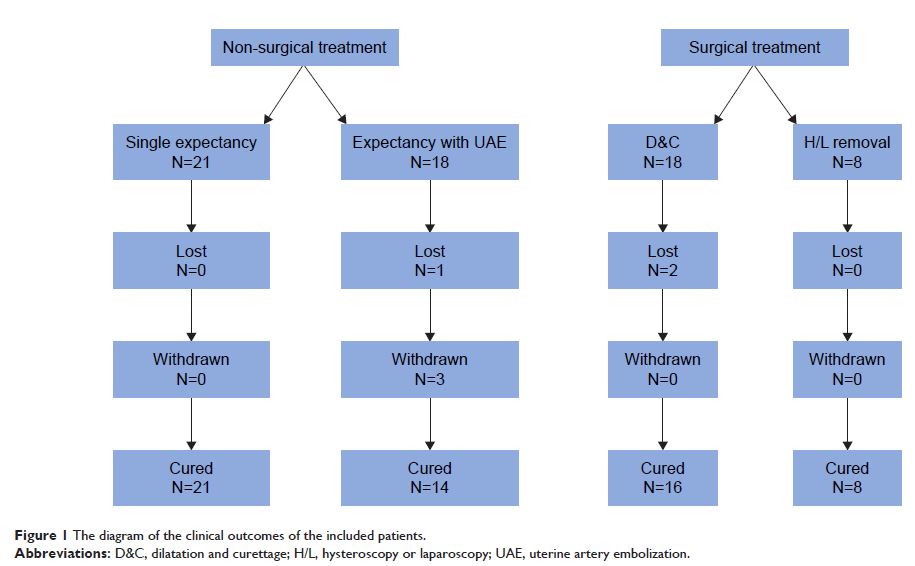9 0 5 7 8
论文已发表
注册即可获取德孚的最新动态
IF 收录期刊
- 2.6 Breast Cancer (Dove Med Press)
- 3.9 Clin Epidemiol
- 3.3 Cancer Manag Res
- 3.9 Infect Drug Resist
- 3.6 Clin Interv Aging
- 4.8 Drug Des Dev Ther
- 2.8 Int J Chronic Obstr
- 8.0 Int J Nanomed
- 2.3 Int J Women's Health
- 3.2 Neuropsych Dis Treat
- 4.0 OncoTargets Ther
- 2.2 Patient Prefer Adher
- 2.8 Ther Clin Risk Manag
- 2.7 J Pain Res
- 3.3 Diabet Metab Synd Ob
- 4.3 Psychol Res Behav Ma
- 3.4 Nat Sci Sleep
- 1.9 Pharmgenomics Pers Med
- 3.5 Risk Manag Healthc Policy
- 4.5 J Inflamm Res
- 2.3 Int J Gen Med
- 4.1 J Hepatocell Carcinoma
- 3.2 J Asthma Allergy
- 2.3 Clin Cosmet Investig Dermatol
- 3.3 J Multidiscip Healthc

胎盘残留的延迟手术和非手术治疗:临床疗效和长期妊娠结局无差异
Authors Chen W, Zhang Z, Liu X
Received 28 October 2017
Accepted for publication 18 February 2018
Published 10 July 2018 Volume 2018:14 Pages 1205—1212
DOI https://doi.org/10.2147/TCRM.S155452
Checked for plagiarism Yes
Review by Single-blind
Peer reviewers approved by Dr Hoa Le
Peer reviewer comments 2
Editor who approved publication: Professor Deyun Wang
Purpose: In a tertiary hospital, patients facing delayed treatment with
placental remnants were common. The aim of this study was to assess the
clinical efficacy and long-term pregnancy outcomes of the delayed
surgical/non-surgical treatment for placental remnants.
Patients and methods: The records of referral patients with placental
remnants after second/third-trimester delivery/termination of pregnancy were
retrospectively analyzed. A long-term follow-up was made by phone to inquire
about the future pregnancy outcomes. The measurements of clinical efficacy
included the postpartum intervals for Doppler ultrasound to become normal and
for menstrual cycle to return to normal. Conception rate, interval for future
pregnancy and obstetric outcomes were used to assess future pregnancies.
Results: A total of 65 patients, who were clinically diagnosed
with placental remnants after termination of pregnancy at the second or third
trimester from 2000 to 2016, were included in this study. Delayed surgical
treatments employed at a median interval (MI) of 2.7 months after
termination of pregnancy had a similar interval for ultrasound (P =0.353) and menstrual cycle (P =0.751) to return to normal
compared with non-surgical treatments. For non-lactating patients who accepted
expectant treatments, the postpartum interval for ultrasound to return to
normal was significantly longer than that for menstrual cycle to become normal
(MI=3.6, 1.5 months, respectively, P =0.000). For all
of the patients successfully treated, the conception rate (P =1.00), the interval for a second
pregnancy (P =0.771), ongoing-pregnancy/live
birth rate (P =0.419) and the recurrence rate
of placenta accrete (P =1.00) there was
no significant difference between non-surgical and surgical treatments.
Assisted selective uterine artery embolization at an MI of 23 days after
the termination of pregnancy had a longer interval for ultrasound to become
normal than single expectant treatment (P =0.017). For all
patients after expectant treatments, 94.1% of patients conceived after an MI of
12.5 months with the ongoing-pregnancy/live birth rate of 66.7% and a
33.3% recurrence rate of placenta accreta.
Conclusion: According to our experience, delayed surgeries
at a postpartum interval of 2.7 months might have similar clinical
efficacy and long-term pregnancy outcomes with expectant treatment in treating
placental remnants.
Keywords: placental
remnants, clinical efficacy, reproductive outcome, conservative treatment,
surgical treatment, placental remains
